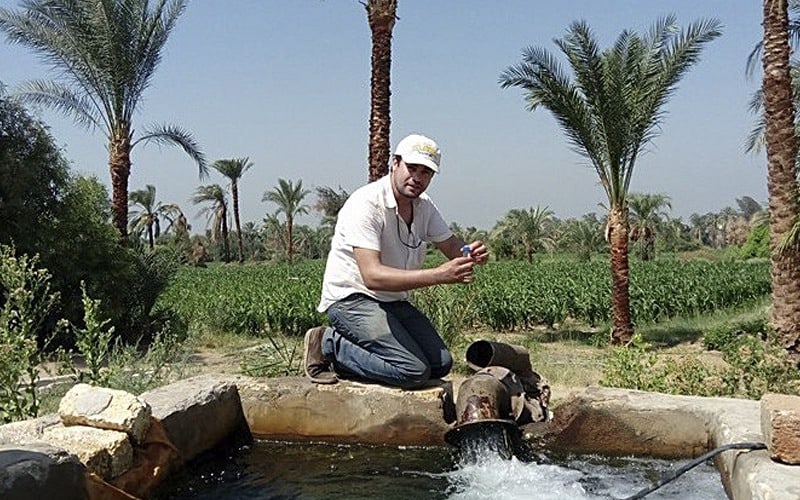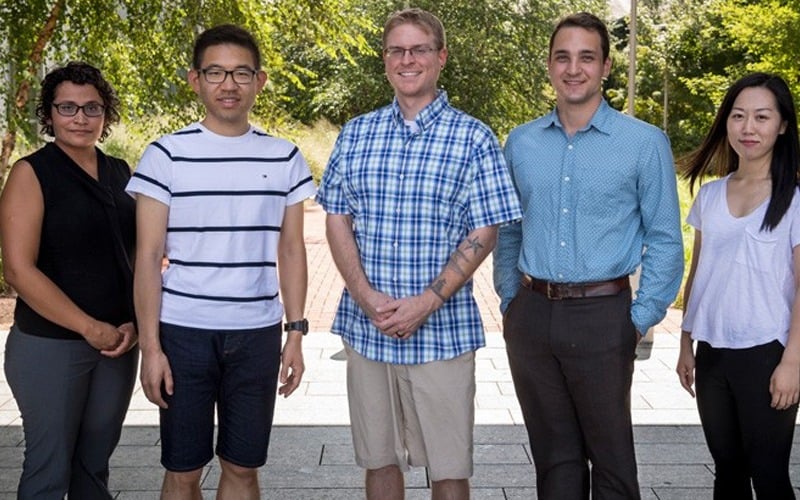 Research & Discovery
Research & Discovery
A Blog Devoted to UD Innovation, Excellence and Scholarship
Research & Discovery
A Blog Devoted to UD Innovation, Excellence and Scholarship
The age of water
ABOVE: Knowing how much water is available in the groundwater aquifers and how fast it is being replenished is vital for providing the population with water for drinking and irrigation. Determining the age of water sources helps in those calculations. | Photos courtesy of Mahmoud Sherif
UD researchers examine the age of groundwater in Egyptian aquifers
Knowing how much water is available in the groundwater aquifers and how fast it is being replenished is vital for providing the population with water for drinking and irrigation. Determining the age of water sources helps in those calculations.
A new study from the University of Delaware looked at chlorine isotopes as chemical tracers to determine the age and origin of groundwaters from the Eastern Desert of Egypt. The research was led by doctoral candidate Mahmoud Sherif and Neil Sturchio from UD and Mohamed Sultan from Western Michigan University. The work resulted in a paper recently published in the Earth and Planetary Science Letters journal.
While groundwater provides only seven percent of the water demand in Egypt, Egyptian water authorities have recently given renewed attention to increasing its exploitation, especially in eastern Egypt, to mitigate the growing water stress and to accommodate agriculture projects.
To measure the age and origin of the groundwater, 29 samples were collected from different wells during several field expeditions in Egypt. The researchers used the long-lived radioactive isotope chlorine-36 to estimate the age of the groundwaters; this isotope forms in the atmosphere and travels to the earth and has a half-life of 300,000 years.
Sturchio, professor and chair of the Department of Geological Sciences in UD’s College of Earth, Ocean and Environment, said that the Eastern Desert is interesting because while it is still dry and arid, it gets more rain than the Western Desert of Egypt.
Because of this rain, the researchers were curious to see if the groundwater in the Eastern Desert might be generally younger than the water found in the Western Desert, but were surprised by their findings.





